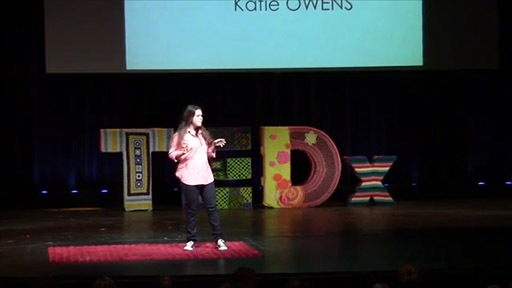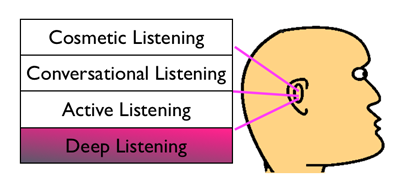Use 'Print preview' to check the number of pages and printer settings.
Print functionality varies between browsers.
Printable page generated Friday, 26 April 2024, 6:44 AM
Good communication
Introduction
In this section about communicating well, you will look at the different ways in which we communicate, whether we are aware of it or not. Communication is something we all do, but if you are caring for someone, either paid or unpaid, the way you communicate can have a significant impact on your relationship with that person. You will be checking your interpersonal skills and your ability to listen fully and with empathy. (Empathy is the ability to identify with and understand somebody else’s feelings or difficulties.) The next thing you will look at is how you can help the people you support to communicate more effectively, and your written communication in particular. So you will be considering the place recording and reporting have in the care you offer.
At the end of the section there is a short quiz to test how much you have learned about communicating well. On successful completion of the quiz you will earn a digital badge.
The section is divided into five topics and each of these should take you around half an hour to study and complete. The topics are as follows:
- What is communication? looks at the ways and reasons people communicate, the barriers to communication and ways to overcome them.
- Developing your interpersonal skills explores interpersonal skills and the way we use them in all areas of our lives. It also looks at ways to develop those skills, including becoming a better listener and working as part of a team.
- Are you listening or waiting to speak? examines the importance of being able to listen, and looks in further depth at the different levels of listening and how and when to use them.
- Ways to help people communicate discusses ways to become a better communicator, including ways to communicate with people with dementia and learning disabilities.
- Recording and reporting outlines the reasons for being clear and specific in written records and reporting situations, and gives guidance on how best to complete documentation of this nature.
Learning outcomes
By completing this section and the associated quiz, you will:
understand the importance of good communication and the different ways of communicating, including the role of active listening
understand ways of developing good interpersonal skills and the importance of accurate and factual record-keeping.
1 What is communication?
Activity 1
Have a look at these images. What do all these things have in common?
| image | image | image | image |
|---|---|---|---|
Figure 1 What do they have in common?
Look again, and make a note of what you think each of them is communicating.
Comment
- a.Bird singing – could be trying to defend its territory or attract a mate.
- b.Ambulance with flashing lights and siren – get out of the way, I’m in a hurry.
- c.Phone with incoming text message – someone wants to ask or tell another person something.
- d.Cat winding itself around its owner’s feet and purring loudly – this usually means they want their dinner!
- e.Person holding another’s hand – offering comfort or kindness.
- f.Baby crying – their only way to tell you something is wrong.
- g.Phone ringing and person answering – someone wants to ask or tell another person something.
- h.Radio/TV with news coming on – information about what’s going on in the world.
They are all communicating in some way – they all have something to tell you.
We communicate all the time, sometimes without realising it. Something as simple as a raise of the eyebrow, a smile or a frown can convey a clearly understood message from one person to another. In fact, everything we do is communication. We can show people what mood we are in just by the way we walk down the street or by the way we answer the phone. The next activity asks you to think about the ways people communicate.
Activity 2
As you just saw, there are many ways to communicate. See if you can write down at least ten of them here.
Comment
Here are just some of them:
- blog
- body language
- eye contact
- letters
- physical gestures
- pictures
- podcast
- radio
- sign language
- Skype
- speech
- telephone
- text
- touch
- TV
- voice-simulator
and many more.
1.1 Barriers to communication
Good communication is vital in social care. It enables us to build relationships with the people we care for and their families, develop relationships with people we work with and other professionals, provide clear information and carry out appropriate reporting and recording.
From the time we get up to the time we go to sleep, we are communicating. We can have hundreds of moments in a day when we are communicating in many different ways, and with many people. But not everyone is that fortunate.
Some people have real difficulties with communicating what they want from us, and this can sometimes lead to behaviour that we find hard to deal with due to their frustration at not being able to make themselves understood and get their needs met.
When we communicate, it’s not just about the actual words we use (verbal communication). We also need to think about the way we say those words – our tone of voice, the speed of our words, how loudly or softly we are speaking (vocal communication) and what our bodies – especially our faces and hands – are saying. This body language is called visual communication and it includes the way we stand or move our bodies, the way we use our hands, the expression on our faces and the eye contact we make.
Activity 3
Watch this video:
Transcript: If waiters were honest
If waiters were honest
If you didn’t understand the words these people were saying, what impression would you get of the service you were receiving?
Think about what the people in the video were telling you:
- the words they use
- the way they say the words
- their body language.
Which of these did you notice most? Write your thoughts in the box below.
Comment
It is easy to see from the video that the words we use are only a part of the message we are communicating when we speak. The speech of the people in this video says something entirely different from what they are saying with their tone of voice and body language. Think about this when you are with the people you care for, and consider what message you are giving to them, especially if they can’t understand what you are saying.
Visual, verbal and vocal communication
You are now going to think about visual, verbal and vocal communication, and which of these types of communication we use most often.
Activity 4
a.
(a) Visual 43% Vocal 21% Verbal 36%
b.
(b) Visual 71% Vocal 2% Verbal 27%
c.
(c) Visual 55% Vocal 38% Verbal 7%
The correct answer is c.
Comment
(c) Visual 55% Vocal 38% Verbal 7%
1.2 How do things go wrong?
There are lots of ways in which things can go wrong with verbal communication. Listed below are just a few of them.
- Maybe the person doesn’t understand what you mean.
- They may misinterpret what you have said.
- They don’t hear correctly.
- You may have given too many instructions at once.
- You chose the wrong time or place to have a difficult conversation.
- The information may have been confusing.
- The other person may not speak the same language as you.
Have you ever had to deal with some of the situations shown in Figure 2?
| image | image | image |
|---|---|---|
Figure 2 How verbal communication can go wrong
We give messages we aren’t aware of with our body language, especially if the other person has limited understanding of the language being spoken. So you need to take extra care to choose the right time and place, and to give people time to process information. If you keep repeating things because someone with limited understanding hasn’t responded quickly, the process often has to start again.
In the next activity you will see how confusion can arise if our words do not always match the other messages we are giving with our body language and facial expressions.
Activity 5
Read the case study and then answer the questions that follow.
Case study: Rosie
Rosie lives in a supported living unit with five other people with learning disabilities. They are supported by a team of staff. Rosie is able to verbally communicate her needs and emotions clearly, but some staff see her as being very demanding and are not always happy to work with her.
Verbally the staff are always pleasant to Rosie, saying all the right things. But their non-verbal communication gives a different message. For example, Rosie asks for her third drink of the morning. Pam, who is trying to watch a programme on television, says ‘Yes, sure Rosie, coming right up’ but when she says it, she sighs and rolls her eyes. She brings back Rosie’s tea and smiles, puts it down muttering ‘What did your last slave die of?’ and walks away, without waiting for any further comment from Rosie.
- If you were Rosie, how would you feel about this incident, and why?
- If you were another member of the team, what would you say to Pam?
Comment
Rosie probably feels that Pam doesn’t like her very much because she has seen Pam’s facial expressions and heard her muttered comments. She is confused because Pam is still smiling and getting her what she asks for.
Another member of the team might speak to Pam because her treatment of Rosie is unfair. If Pam thinks Rosie is being demanding, Pam needs to discuss this with the rest of the team and they should agree on coping strategies for those staff who find Rosie difficult to deal with.
It is all too easy to get into bad habits when it comes to communicating, as the next activity will show you.
Activity 6
Look at the following video and think about the way these staff members are behaving, and how it could be done differently.

Transcript: Bit of sugar, love?
Bit of sugar, love?
- Write down three things you would do differently.
Comment
The staff are having a conversation over the cared-for person rather than involving him in the conversation. They are also not focusing on their task, which is to help him with his breakfast. They should have focused on ensuring that he was able to reach his drink. When supporting him with his food the staff should ask how he prefers his food and wait for his response, and ensure that he is happy with the way the food is given to him.
You may want to take some time outside of this course to consider when your communication has been misunderstood, and what steps you could have taken to eliminate misunderstanding.
2 Developing your interpersonal skills
In your role of supporting others you will often need to communicate with the people you support, as well as with the other people involved in caring for that person.
If you care for someone at home, you may need to speak to social workers or medical professionals, as well as friends, family and neighbours in order to get the right support for that person and for yourself. It is important to make the most of these opportunities, and to do that you may need to develop your interpersonal skills.
2.1 What are interpersonal skills?
We use our interpersonal skills to communicate and interact with people. Having good interpersonal skills can often result in us having positive relationships with our family, friends and work colleagues especially. We use our interpersonal skills in everything we do. However, these skills are not something we are taught in a classroom. We usually learn them in daily life by seeing others use them with positive results.
Here are some examples of interpersonal skills:
- the ability to express yourself clearly and confidently
- being aware of body language and facial expressions
- listening to others completely and with empathy
- being willing to collaborate and work as a team
- understanding implied rules of behaviour
- being able to assert yourself without making the other person seem small or you to appear angry and aggressive
- being responsible and timely
- being able to speak for, or support, others who are less able to do it for themselves (advocacy).
It takes time and practice to develop good communication and interpersonal skills. The more you interact with other people and the more you are exposed to a wide range of experiences, the more likely you are to develop these important qualities. One of the most important interpersonal skills you need in your role as a carer is being able to collaborate and work as a member of a team. Often the people you are caring for will have support from a wide range of people and agencies, and good communication is key to being part of a team that works well.
In the next activity you are going to be thinking about the people who make up teams, and how those teams work. You will also have the opportunity to reflect on your own experiences of being part of a team.
Activity 7
Marie is a paid carer, who works for an agency. Read her story and then answer the questions that follow.
Case study: Marie
I have been really busy since I started working for the agency. I have done a lot of work with Leonard Cheshire as a home carer. I feel that I have established a good reputation for reliability as I never like to let my clients down. My kids are quite happy to look after themselves before and after school and they are old enough to leave safely. I think they would like me to be around a bit more, but I tell them that if they want the extras they have to put up with doing more around the house and eating ready meals. They don’t really mind because they can choose what they eat!
The manager of the agency says that I am one of her best workers and lots of my regulars know me now and ask after me if I’m not there. She knows I’d prefer permanent work, but the agency pays more otherwise I’d work for Leonard Cheshire permanently.
One of the best things about being agency staff is you don’t get involved in all the office politics and I find some of the other carers can be very spiteful, especially about us agency people. They think we don’t work as hard as they do, or that we don’t care about the people we are looking after.
It’s hard to find time to get to know other people and they all seem to have friends already, so maybe they don’t want to mix with agency people – I don’t know. I sometimes feel like they resent me because I am paid more than them for the same work, but I tell them they could leave and work for the agency as well. I don’t understand why they don’t if the money is so important.
Now see if you can list all the teams that Marie is part of, and say what her role is in each team.
- What advice could you give Marie about working in each team?
- Have you worked as part of a team? Was it a successful team? If so, what made it work well?
- If it was not successful, can you think of why it did not work well?
Comment
This is a useful activity for reviewing your understanding of the ideas in this section about interpersonal skills.
Marie is part of three teams: the agency, Leonard Cheshire and her family.
In her agency team Marie is part of a support network for other services.
In her Leonard Cheshire team Marie must be flexible, filling whatever role she has been asked to fill, but she does not belong to the wider team, as they see her as an ‘outsider’.
In her family team, Marie takes on the role of team leader, and allocates tasks to other members of the team (her children) and expects them to be fulfilled.
Advice about working in each team
Marie could develop a better understanding of the agency team that she is part of, and how that supports other teams, such as Leonard Cheshire.
Alternatively, she could start to gain a better understanding of the relationships in the group where she spends a lot of time (the Leonard Cheshire team) and where she fits into this.
Marie might also look at the change in roles in her family now that she is working longer hours, and whether her children feel they are part of a team.
For your own reflection on being part of a team, you probably identified good communication as the reason your team worked well. You probably received clear instructions and everyone understood what they had to do. Or poor communication may have meant that people didn’t really know what was expected of them, or they had misinterpreted instructions that were unclear. You might have considered whether you led the activity or were happy to play a supporting role. You might not have thought your part was important, but looking back on the activity you might now see that everyone has a part to play in a team.
3 Are you listening or waiting to speak?
Listening is a key part of the communication process and to do it well you need to use your sense of sight as well as hearing. Remember we talked about visual communication in the first section?
We can generally process information quicker than we can convert it into a spoken response, so there is a risk that our mind tends to wander. Active listening is about consciously focusing for a specific purpose and is an essential part of activities like counselling or attending meetings and reviews about the people you are supporting. To be an active listener you need to clarify and confirm the other person’s spoken thoughts, as well as taking in their non-verbal messages.
- How long do you actually listen to another person before interrupting?
- How quickly do your own thoughts take over and you start thinking about what question to ask or how to reply even before the other person has finished speaking?
- Do you find yourself interrupting the person to give your own opinion or to finish their sentences before they are finished?
3.1 Listening is not the same as hearing
Hearing refers to the sounds that you hear, but listening needs you to focus. Listening means paying attention not only to the words but to how they are said.
- What kind of language is being used?
- What is the tone of voice telling you?
- What does the person’s body language tell you?
You need to be aware of both verbal and non-verbal messages, and your ability to be a good listener depends on how well you see and understand these messages.
Activity 8
Watch this TED talk about the art of active listening.

Transcript: Active listening
Active listening
Katie Owens tells us to remember three key words if we are going to be active listeners. They are:
- Be
- Here
- Now.
What do you think she means by this? Write your answer below.
Comment
Katie Owens says that we should be present for the person we are listening to. We need to be in the moment with them, not doing anything else or distracted by anything else, such as mobile phones or having one eye on the television. It is also helpful to sum up what someone has told you, to give them the chance to check whether you have listened correctly and have understood what they have told you.
3.2 Do we always need to be active listeners?
The next activity is about the way we listen in different situations, and you can see how the different ‘levels’ of listening work for us each time.
Activity 9
Read the article from BeWellTeachWell (Teacher Support Network and Robert Latham, 2016) about the different levels of listening, and think about the situations when you might use each level.
Comment
There is room for all types of listening in our lives.
We use cosmetic listening when we are ‘passing the time of day’, chatting at the bus stop or waiting in a queue. It is for times when what the other person is saying doesn’t really matter and you don’t need to act on what they are telling you.
Conversational listening is when you know you have to respond to the other person and think a bit about what they are saying. You might be chatting to a colleague at work or to friends and family about what you will watch on TV or where you are going at the weekend.
You may have used active listening in discussions about the care of the people you support. The listener uses gestures or facial expressions, sometimes asking questions or repeating back what the speaker has said for clarification. Often the listener is thinking about what response is required.
Deep listening is for conversations that need recording or are really important, for example if a person is talking about an abusive situation in their life. At times like this you are paying such close attention that you don’t really think about anything other than what the person is saying to you.
4 Ways to communicate better
You may find it easy to understand some of the people you care for but you struggle to understand others. This can be very frustrating and lead to behaviour that you find difficult to deal with. Imagine how it must feel to be trying to tell people what you want or how you feel, and everyone seems to be getting it wrong. It can also prove stressful for carers when they have to pass on sensitive or upsetting information and the person they are caring for doesn’t understand them.
Look at this video on non-verbal communication [Transcript]. Communication is vital to our well-being and quality of life. As noted by East Sussex Total Communication (2009), ‘it impacts on our relationships, choice, control, emotions, self-esteem and self-expression’.
Imagine that you have a very limited understanding of speech and you are unable to express your feelings. The people around you don’t understand you. Imagine that you keep trying to communicate in your own way but they just keep on speaking to you.
You don’t make a fuss so they sit you in a chair in the lounge all day, every day and they think you are happy to sit there because you don’t make a fuss.
Imagine that you try a different way of communicating and then they say you are too challenging to take out. So now you sit in your chair in the lounge all day, every day.
It is essential that we have a method of communication; an opportunity to communicate and a subject to communicate about.
In order to make communication accessible to everyone, you need to use all the methods available to you to give and receive information.
Aids to communication include gestures, body language, signs, symbols, photographs, objects of reference and electronic aids. All these can be used to support speech or as an alternative to speech.
One really important point that we can all put into practice is to give people time to process information. Whether it’s Alzheimer’s, learning disabilities or just a difficult environment, if you are looking for a response try to count for 20–30 seconds in your head before speaking again or repeating the question. Every time you speak the person has to start the process of formulating an answer again (and again, and again!), which can be frustrating for both parties.
4.1 Dementia
You may be caring for a person or people with any of the various forms of dementia, and the Alzheimer’s Society website is very helpful with advice and support, but below is an article from the Alzheimer’s Association of America that has some very clear information about communicating with people with dementia. You will learn more about cognitive disorders such as dementia in Section 2, Mental health awareness.
Activity 10
Read Communication and Alzheimer’s, an article from the Alzheimer’s Association. Then answer the questions below.
- What response is suggested if the person you are supporting cannot find a word?
- Why should you keep trying to communicate, even when the person doesn’t respond?
- How can improving your listening skills help you to communicate with someone with dementia?
Comment
If the person uses the wrong word or cannot find a word, encourage them to ‘have a go’ but be careful not to cause unnecessary frustration. While a person with dementia may not always respond to your efforts to communicate, he or she still needs the stimulus of continued communication. There will be times when they will respond so it’s important to keep trying, although you should choose your words carefully.
By improving your listening skills you will be more likely to spot changes in a person’s ability to communicate. In the early stages of dementia, the person’s communication may not seem very different but as the condition progresses, you may recognise other changes such as using familiar words repeatedly or inventing new ones for familiar objects. The more closely you listen, the more likely you are to spot these signs and be able to help them to continue communicating as long as possible.
4.2 People with learning disabilities
Mencap gives this advice for communicating with people with learning disabilities:
‘As long as they have the right support to learn, people with a learning disability can achieve anything. As long as you communicate that support to somebody in an understanding way.’
It is important to always use accessible language, and to avoid jargon or long words that might be hard to understand. You should also take into account any physical disabilities the person may have that could make communication difficult for them.
- In person: many people with a learning disability have told Mencap that the best way to communicate with them is face-to-face and one-to-one.
- In writing: in writing, it is a good idea to use bigger text and bullet points, and to keep writing at a minimum of 16 point. It is also important to remember that too much colour can make reading harder for some people.
- On the phone: the best way to talk to someone with a learning disability on the phone is slowly and clearly, using easily understandable words.
[An insightful comment from someone with a learning disability.]
‘When I had to go to the hospital the doctors would usually speak to my mum rather than speak to me. So I didn’t bring her to the hospital anymore. Finally they started to recognise I’m the one, I need to understand, not my mum.’
Some people have communication difficulties that are a result of a brain injury, such as a stroke, and have to learn to communicate in a different way as part of their recovery. Some ways of supporting this are as follows:
Give the person your full attention and try to avoid any background distractions. Try to speak clearly at a normal volume.
Listen and watch for the person’s reactions, remember – not all communication is verbal.
Don’t try to speak for the person, or finish their sentences.
Don’t pretend you’ve understood the person if you haven’t or try to speak for them.
Carer’s tip from Scope
Often, we do so much for people they don’t have the need or opportunity to communicate. This is where ‘sabotage’ can come in. Put important objects in a place where the person needs to ask for them; give a meal with no cutlery (again, so they have to ask). Find ways to manipulate situations to necessitate communication.
5 Recording and reporting
Whether your role is to support a family member in their home, or in yours, as an unpaid carer or whether you work in a paid social care role, you are likely to have to maintain some kind of record or communicate with others in writing. These may be official or unofficial documents, but they need to be accurate, factual, clearly written and kept confidential if they contain personal information.
If you work in a paid role, the organisation you work for will have policies in place regarding record-keeping and reporting of incidents and you should be aware of these and follow procedures.
If you are an unpaid carer, any records you keep will be helpful in informing social care and medical services about changes of condition or changing care needs for the person you are supporting, and also changes in your own needs. You should always remember that your needs as a carer are also important, and well-documented records can lead the way to increased support for you in your role as well as for the person you care for.
A diary or communication book will help keep everyone informed about what is going on in the life of the person you are supporting, such as social events and medical appointments, as well as reminders for anyone else who may be supporting the person, for example ordering medication or collecting prescriptions. Bear in mind that this is a public record, and that you shouldn’t record anything in there that is private or confidential.
Communication books are not an appropriate place to write personal comments or criticisms of other staff members. You shouldn’t use them to have ongoing ‘conversations’ with other members of staff.
5.1 Appropriate communication in the appropriate place
When thinking about record-keeping and reporting, one of the important things to remember is that there is a right way to record and there is also a right place to record.
Activity 11
Read these two different messages left for the next shift in a supported living unit.
A message in the communication book: ‘John I cleaned the kitchen for you AGAIN.’
A note written on a scrap of paper and left on the table: ‘Brenda needs to be taken to the doctor as soon as possible.’
Was there anything inappropriate about these messages? If so, what would you do instead?
Comment
The message about cleaning the kitchen does not belong in a communication book. It is a conversation about roles and responsibilities that should take place between the people involved or with a line manager if appropriate.
The message about the doctor is very important and should be in a communication book or on a message board. It should also be communicated verbally to the next person on shift. Notes written on bits of paper can easily be lost, especially if left in a place that is constantly in use.
If you work as a paid carer all records you keep are legal documents and may be used as evidence in court. This means that anything you write should be dated and signed by you, leaving no space for additional information to be inserted.
It is important that all records are factual. You should report only what you actually know or have seen, not your opinion of why it happened or how the person was feeling, unless they are actually able to tell you this information.
For example, you should not record a statement like ‘Dad had a good night’ unless he tells you himself that he had a good night. Instead, you could write something like ‘Dad appeared to be asleep every time I checked.’
Activity 12
Look at these statements and rewrite them in a way that is factual and accurate, not using any language that can be interpreted differently by different readers.
- I was tidying Mr Brown’s bedroom when he suddenly kicked off and pushed me out the door.
- Joan really enjoyed her lunch and loved her trip to the garden centre.
- Eddie got out of bed on the wrong side today. He’s been in a really bad mood since breakfast.
- I think Mum is feeling depressed. She seems in a really low mood.
Comment
- Did Mr Brown want you in his bedroom? Perhaps you should have asked his permission first. How would you record that? This statement says more about the way the carer has behaved, which is not respectful of Mr Brown’s privacy. Perhaps you could say ‘I knocked on Mr Brown’s door and he didn’t answer, so I went in to see if he was alright. He didn’t speak to me so I started to put some of his clothes away. He said in a loud voice “Get out and leave me alone”. Then he took hold of my arm and pushed me towards the door.’
- Did Joan tell you she enjoyed her lunch? Can you honestly say that you know that? Perhaps it would be more accurate to write: ‘Joan finished her lunch and didn’t refuse any of it. In the afternoon we all visited the local garden centre.’
- Why has Eddie been ‘in a bad mood’ since breakfast? Has he told anyone? Maybe he is in pain? Maybe he wanted something different for breakfast and nobody asked him? You could write ‘Eddie appears to be agitated this morning. He refused his breakfast and was pacing up and down the kitchen for 20 minutes and wringing his hands’ and then try to find out what the problem is.
- What has Mum said to make you think she is depressed? What exactly is a ‘low mood’? Would anyone who read it know what it meant? You could say something like ‘Mum has been much less talkative than usual and has not wanted to go out when I have suggested outings recently. Her appetite seems to have reduced as she is only picking at her food. She spends a lot of time just sitting in her chair. I asked if anything was wrong, and she said she “just can’t be bothered with anything”.’
You are probably thinking now that it all seems very complicated, but it gets easier. When you record information about the people you support, try to get in the habit of reading it back and asking yourself ‘Is it fact or opinion?’ and ‘Does it paint a clear and factual picture of events?’
It all comes with practice, and if you can share the task with another person you will be able to work together on improving your record-keeping and reporting skills.
5.2 Language and perception
It is important that you consider the way the language you use will be received by others. It is absolutely not alright to swear at or about the people you are supporting, or your colleagues. What some people call ‘banter’ may be seen as offensive or prejudiced behaviour by others, and you always need to be aware of how others may perceive what you say.
However, we have already discussed the fact that some of the people you support may use words or behaviours that you find unacceptable and difficult to deal with. This may be because of your own backgrounds and beliefs or sensitivities, but you do have to find a way to deal with this without resorting to retaliation.
There will be times when you have to record incidents involving the behaviour of people you support, and if you do, it is very important to do this accurately. It’s no good saying ‘He swore at me’ or ‘He kicked off’ because this is not helpful for anyone trying to assess the incident or trying to prevent it happening again.
If you need to record an incident and it involves someone swearing, it is important that you write down exactly what they said, even if you find it hard to do.
Also, if there is an incident that needs to be recorded you must write exactly what you saw happen, and nothing else. It is also helpful to write down what had been happening just before and the result of the incident. This again is so that anyone trying to assess the person’s behaviour has a clear picture of what happened without it being clouded by other people’s opinions or judgements.
Key points from Section 1
In this section you have learned:
- that everything you do or say is communication
- the importance of visual communication when caring for others
- what interpersonal skills are and some of the ways you can develop them
- the different stages of listening and the role that active listening plays in communication
- that there are different ways to help people to communicate
- why good record-keeping is important and what makes a good record.
Section 2 covers mental health problems. Studying this section will give you an insight into the care and treatment options for people with a mental illness. You will also learn about the role of family carers looking after a friend or a relative with mental health problems.
Section 1 quiz
Well done, you have now reached the end of Section 1 of Caring for adults, and it is time to attempt the assessment questions. This is designed to be a fun activity to help consolidate your learning.
There are only five questions, and if you get at least four correct answers you will be able to download your badge for the ‘Good communication’ section (plus you get more than one try!).
- I would like to try the Section 1 quiz to get my badge.
If you are studying this course using one of the alternative formats, please note that you will need to go online to take this quiz.
I’ve finished this section. What next?
You can now choose to move on to Section 2, Mental health awareness, or to one of the other sections, so you can continue collecting your badges.
If you feel that you’ve now got what you need from the course and don’t wish to attempt the quiz or continue collecting your badges, please visit the Taking my learning further section. There you can reflect on what you have learned and find suggestions of further learning opportunities.
We would love to know what you thought of the course and how you plan to use what you have learned. Your feedback is anonymous and will help us to improve our offer.
- Take our Open University end-of-course survey.
We’re really interested in hearing from you about how you found the course, whether it has been helpful to you and what we could improve. Your feedback is anonymous but will have massive value to us in improving what we deliver.
References
Acknowledgements
This free course was written by Frances Doran (Operations Training Supervisor at Leonard Cheshire Disability) and John Rowe (Lecturer for The Open University).
Except for third party materials and otherwise stated (see terms and conditions), this content is made available under a Creative Commons Attribution-NonCommercial-ShareAlike 4.0 Licence.
The material acknowledged below is Proprietary and used under licence (not subject to Creative Commons Licence). Grateful acknowledgement is made to the following sources for permission to reproduce material in this free course:
Every effort has been made to contact copyright owners. If any have been inadvertently overlooked, the publishers will be pleased to make the necessary arrangements at the first opportunity.
Images
Figure 1
(a) © Frank Leung/iStockphoto.com
(b) © Taing Sohlman/iStockphoto.com
(c) © Chaofann/iStockphoto.com
(d) © courtesy Jack Campin
(e) © Verandah/iStockphoto.com
(f) © Spotmatic/iStockphoto.com
(g) © block37/iStockphoto.com
(h) © Vitaly-Art/iStockphoto.com
Figure 2
(a) © akindo/iStockphoto.com
(b) © Kaladrakas in Flickr
(c) © Tuned-In/iStockphoto.com
(d) © Rapid Eye/iStockphoto.com
(e) © Lisafx/iStockphoto.com
(f) © Lokobaho/iStockphoto.com
Figure 3: courtesy © Excellence Assured Ltd
Text
Activity 9: Text: Teacher Support Network and Robert Latham, 2016 http://www.bewellteachwell.org.uk/ relationships/ listening
Videos
Activity 3: Video transcript: courtesy https://www.buzzfeed.com/
Activity 6: Video and transcript: courtesy of © Leonard Cheshire Disability https://www.leonardcheshire.org/
Activity 8: TED video and transcript: Katie Owens and Active Listening https://www.youtube.com/ watch?v=WER63AY8zB8 made available in http://www.ted.com/ # under http://creativecommons.org/ licenses/ by-nc-nd/ 3.0/














